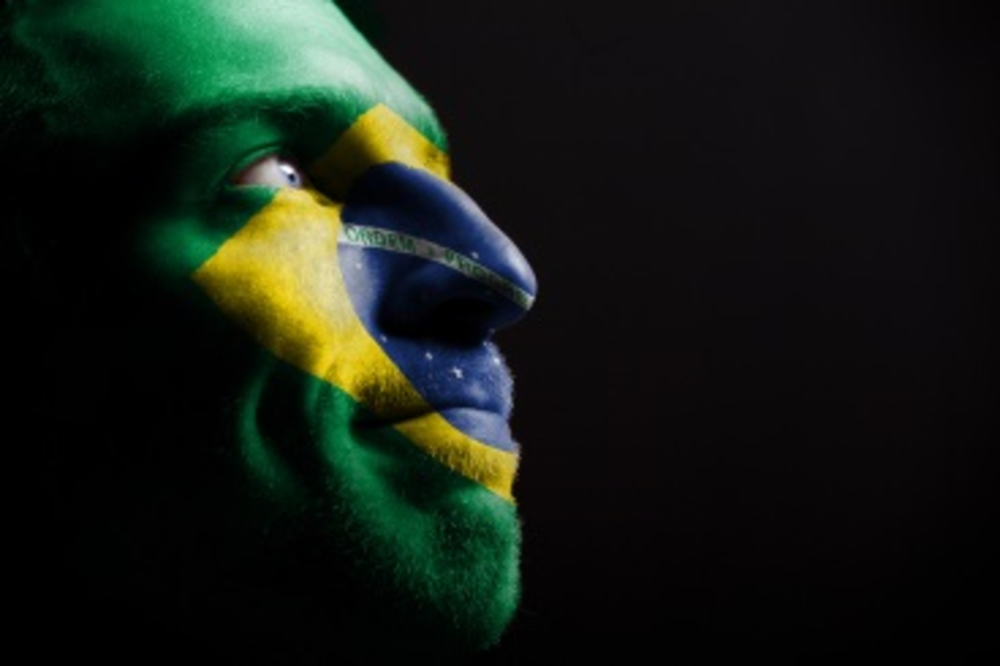What if I told you there was a magical wonderland where mobile commerce is expected to grow by 35% through 2015? A phantasmagorical place that boasts the largest and fastest-growing Internet economy in the world. Where the number of Facebook users surpasses the U.S. by 13% and where, by 2016, one out of every two mobile handsets sold there will be a smartphone.
Well, that place is Latin America, and with the FIFA World Cup draw scheduled for December 6 in Brazil, there’s a prime chance for savvy global marketers to make their mark. The World Cup won’t actually take place until June/July 2014, but between now and then are many months of first-class marketing opportunities—and if you’re interested, it’s time to get your gluteos in gear, so to speak.
For the uninitiated, as I recently was, the World Cup draw on Friday is about determining which teams will face off during the actual Cup, according to a series of somewhat complicated rules I wasn’t totally able to decipher from the related Wikipedia page.
Facts: Brazil is serving as the host country this year, and it’s already pumped more than $70 million into World Cup-related tourism and publicity. Seven million visitors are expected to descend on Brazil for the games. To put that into perspective, the 2010 World Cup in South Africa drew about 3.5 million visitors. Live TV and streaming viewing is projected to be off the charts. Seven of the 32 participating teams are from Latin America: Argentina, Brazil, Chile, Columbia, Ecuador, Mexico, and Uruguay—some of the largest consumer markets in the region all primed, pumped, and ready to engage. Sixty-four games total will be played over the course of 32 days. The World Cup and futból in general are the most popular topics on social media, bar none.
Soccer is popular almost everywhere in the world—and almost nowhere is it more popular than in Latin America.
“We’re expecting record mobile engagement during the World Cup in 2014 and a big rise in real-time marketing from brands, as well as a huge spike in second-screen engagement and record-breaking streaming numbers across the globe,” says Maren Lau, partner/SVP of IMS (Internet Media Services). “That means the opportunity for brands to be present on the second screen is bigger than it’s ever been before.”
Digital will play a particularly prominent role in the World Cup not only because of the tenor of the audience, but also because of the lack of traditional marketing opportunities. Futból is played in two 45-minute halves with a commercial break at halftime only, so unlike the Super Bowl, the TV land grab isn’t all that juicy. Brands can also sponsor players or teams and get their logos on jerseys—but the real meat will be online where the fans will head to share their passion and air their ire.
“Marketers need to realize that they’re going to see lots of online conversations take place on global platforms—Twitter, Instagram, Facebook, even YouTube,” Lau says. “Limited commercial availability on television means marketers should be turning to these digital engagement opportunities.”
One big thing marketers should keep in mind before launching any World Cup-related marketing is that Latin America is not one place with one identity. It’s a collection of 20 multilingual countries, each with its own history, cultural nuances, and preexisting sporting rivalries—the latter of which is taken particularly seriously.
“Fans need to be spoken to differently in different markets,” Lau says. “You need to keep aware of language nuances but you also need to keep each country’s history in mind when developing advertising—there certainly is not a one-size-fits-all solution for Latin America.”
For example, take Brazil and Uruguay. The national teams of those two countries have a longstanding rivalry that goes all the way back to the last time Brazil hosted the World Cup in 1950 when Uruguay beat Brazil on its home turf in the final match. With its Ghost of 1950 campaign, PUMA, the official sponsor of the Uruguayan team, pokes fun at Brazil’s storied 1950 loss (see the video above in which a ghost in a big blue sheet—the color of Uruguay—terrorizes locals on the beach and on the streets). The reaction’s been mixed: Uruguay obviously loves the ad; Brazil significantly less so. But the point is it shows a nuanced understanding of the lay of the land on the part of PUMA.
According to Lau, there are quite a few large brands out there that do a good job at adapting their global messaging to local regions, among them Samsung, Coca-Cola, and Sony (all World Cup partners), and McDonald’s (a World Cup sponsor).
“Every innovative brand that understands global marketing will also be tailoring their messages to local audiences,” Lau says. “To be successful with World Cup marketing you need to be able to anticipate the global passion, but on another level also capture the local spirit and flavor.” Because the world will be watching.
Imagine the Super Bowl happening every day for 32 days. Now imagine more than 700 million people are watching. That’s going to generate a lot of engagement.
“During the 2010 World Cup there were people from 172 countries tweeting in 27 different languages, and the moment of the final goal, people from 81 countries tweeted in 23 different languages,” Lau says. “The World Cup isn’t just about the two countries playing each other in a match; marketers need to remember that there is always a global audience.”








